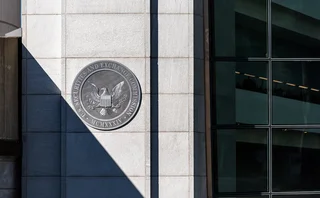
Additional executive compensation rules issued under TARP
The US Treasury has released new rules under its Troubled Asset Relief Program
WASHINGTON DC - The US Department of the Treasury has issued interim final rules for reporting and record-keeping requirements under the executive compensation standards of the Troubled Asset Relief Program's (TARP) Capital Purchase Program (CPP).
The new rule issued today requires the chief executive officer (CEO) to certify annually within 135 days after the financial institution's fiscal year end that the financial institution and its compensation committee have complied with these executive compensation standards.
Moreover, within 120 days of the closing date of the Securities Purchase Agreement between the financial institution and the Treasury, the CEO is required to certify that the compensation committee has reviewed the senior executives' incentive compensation arrangements with the senior risk officers to ensure these arrangements do not encourage senior executives to take unnecessary and excessive risks that could threaten the value of the financial institution.
The CEO must provide the 120-day and annual certifications to the TARP chief compliance officer. The financial institution is also required to keep records to substantiate these certifications for at least six years following each certification and provide these records to the TARP Chief Compliance Officer upon request.
The Treasury originally published executive compensation standards for the CPP last October, which generally apply to the chief executive officer, chief financial officer, plus the next three most highly compensated executive officers. These standards include: ensuring that incentive compensation for senior executives does not encourage unnecessary and excessive risks that threaten the value of the financial institution; requiring clawback of any bonus or incentive compensation paid to a senior executive based on statements of earnings, gains, or other criteria that are later proven to be materially inaccurate; prohibiting the financial institution from making any golden parachute payment (based on the Internal Revenue Code provision) to a senior executive; and agreeing not to deduct for tax purposes executive compensation in excess of $500,000 for each senior executive.
The Treasury also issued today a revised version of the executive compensation guidelines applicable to financial institutions participating in programs for Systemically Significant Failing Institutions to add similar compliance reporting and record-keeping requirements as in the Interim Final Rule.
Frequently Asked Questions relating to the executive compensation standards to assist financial institutions' compliance with these standards have also been issued.
Click here for the Interim Final Rule; here for revised notice, and here for the FAQs.
Only users who have a paid subscription or are part of a corporate subscription are able to print or copy content.
To access these options, along with all other subscription benefits, please contact info@risk.net or view our subscription options here: http://subscriptions.risk.net/subscribe
You are currently unable to print this content. Please contact info@risk.net to find out more.
You are currently unable to copy this content. Please contact info@risk.net to find out more.
Copyright Infopro Digital Limited. All rights reserved.
As outlined in our terms and conditions, https://www.infopro-digital.com/terms-and-conditions/subscriptions/ (point 2.4), printing is limited to a single copy.
If you would like to purchase additional rights please email info@risk.net
Copyright Infopro Digital Limited. All rights reserved.
You may share this content using our article tools. As outlined in our terms and conditions, https://www.infopro-digital.com/terms-and-conditions/subscriptions/ (clause 2.4), an Authorised User may only make one copy of the materials for their own personal use. You must also comply with the restrictions in clause 2.5.
If you would like to purchase additional rights please email info@risk.net
More on Risk management
SEC leadership change puts Treasuries mandate under scrutiny
FICC clearing models approved, but critics think delay could revive prospects of done-away trading
Markets Technology Awards 2025: Untangling the knots
Vendors jockeying for position in this year’s MTAs, as banks and regulators take aim at counterparty blind spots
Risk Awards 2025: The winners
UBS claims top derivatives prize, lifetime award for Don Wilson, JP Morgan wins rates and credit
An AI-first approach to model risk management
Firms must define their AI risk appetite before trying to manage or model it, says Christophe Rougeaux
BofA sets its sights on US synthetic risk transfer market
New trading initiative has already notched at least three transactions
Op risk data: At Trafigura, a $1 billion miss in Mongolia
Also: Insurance cartels, Santander settlement and TSB’s “woeful” customer treatment. Data by ORX News
Cyber risk can be modelled like credit risk, says Richmond Fed
US supervisors may begin to use historical datasets to assess risk at banks and system-wide
The changing shape of risk
S&P Global Market Intelligence’s head of credit and risk solutions reveals how firms are adjusting their strategies and capabilities to embrace a more holistic view of risk







